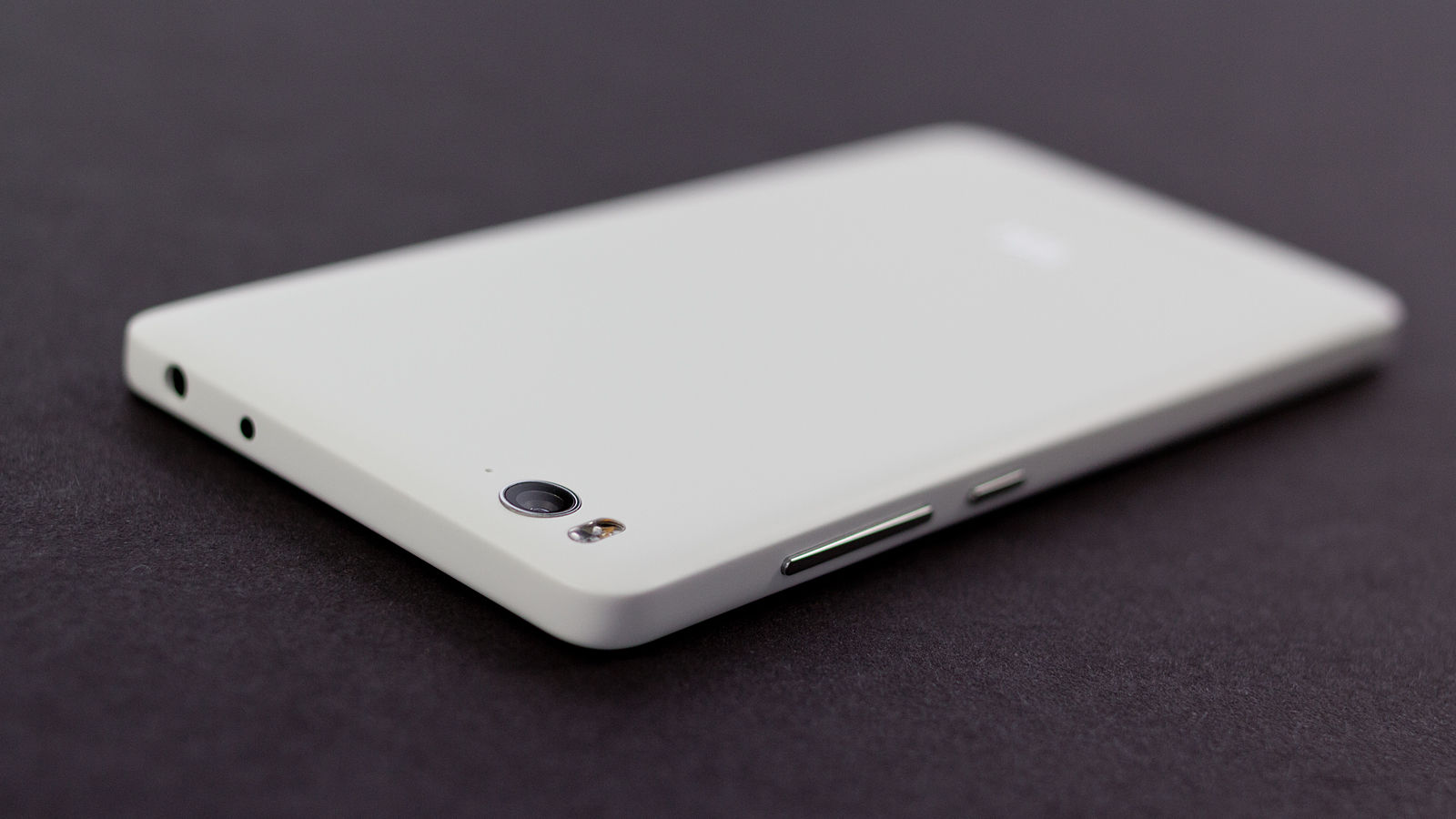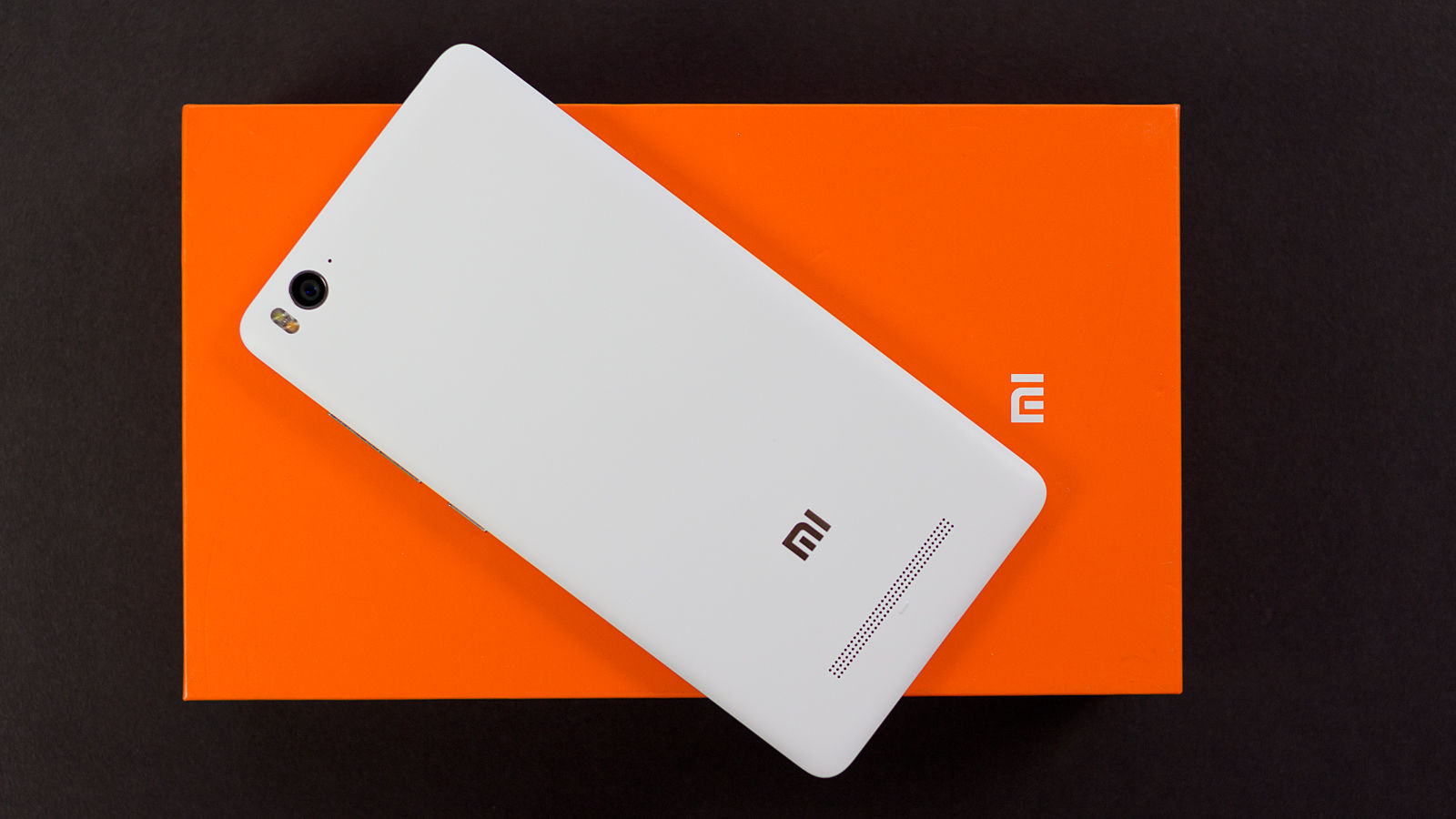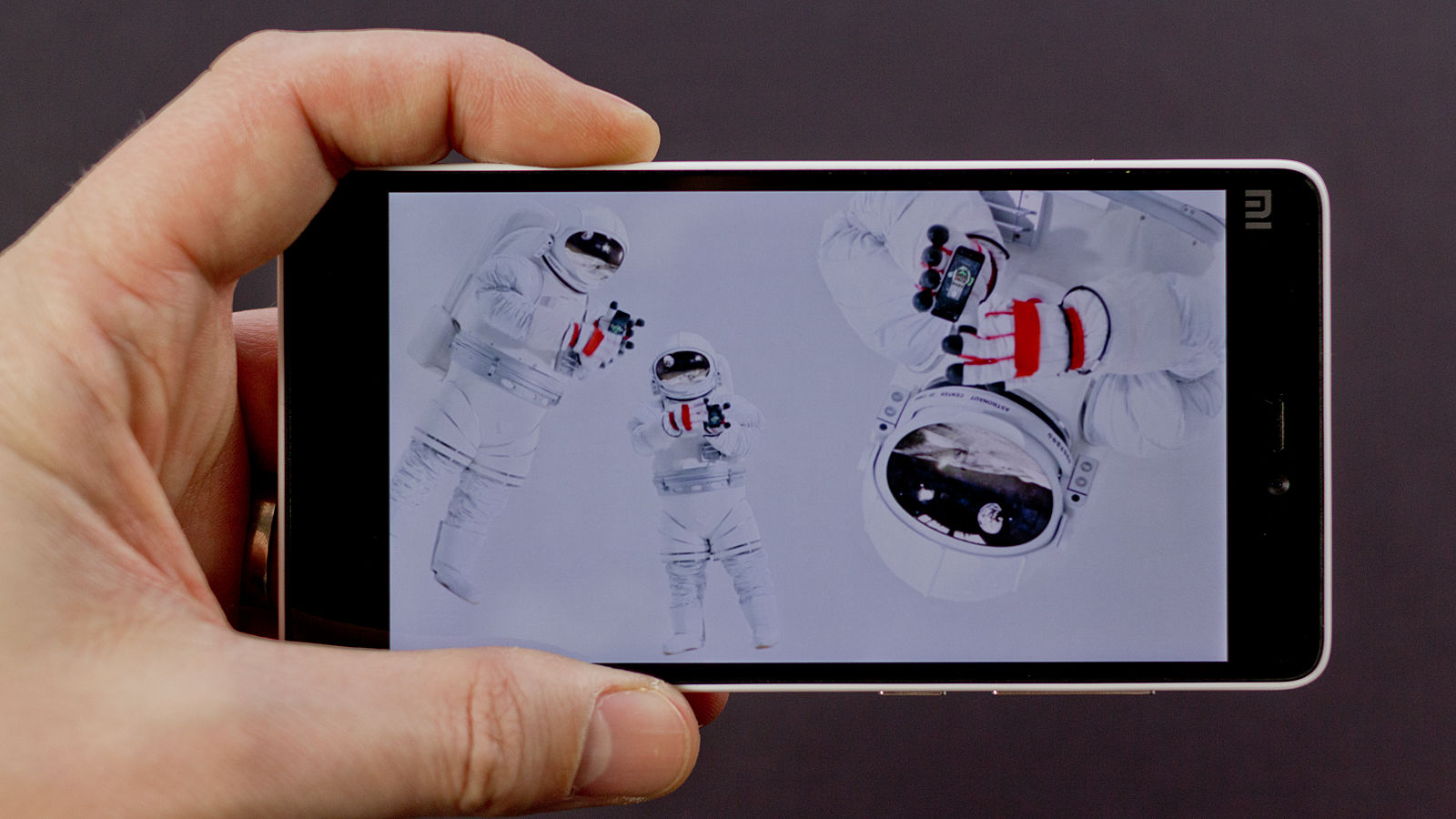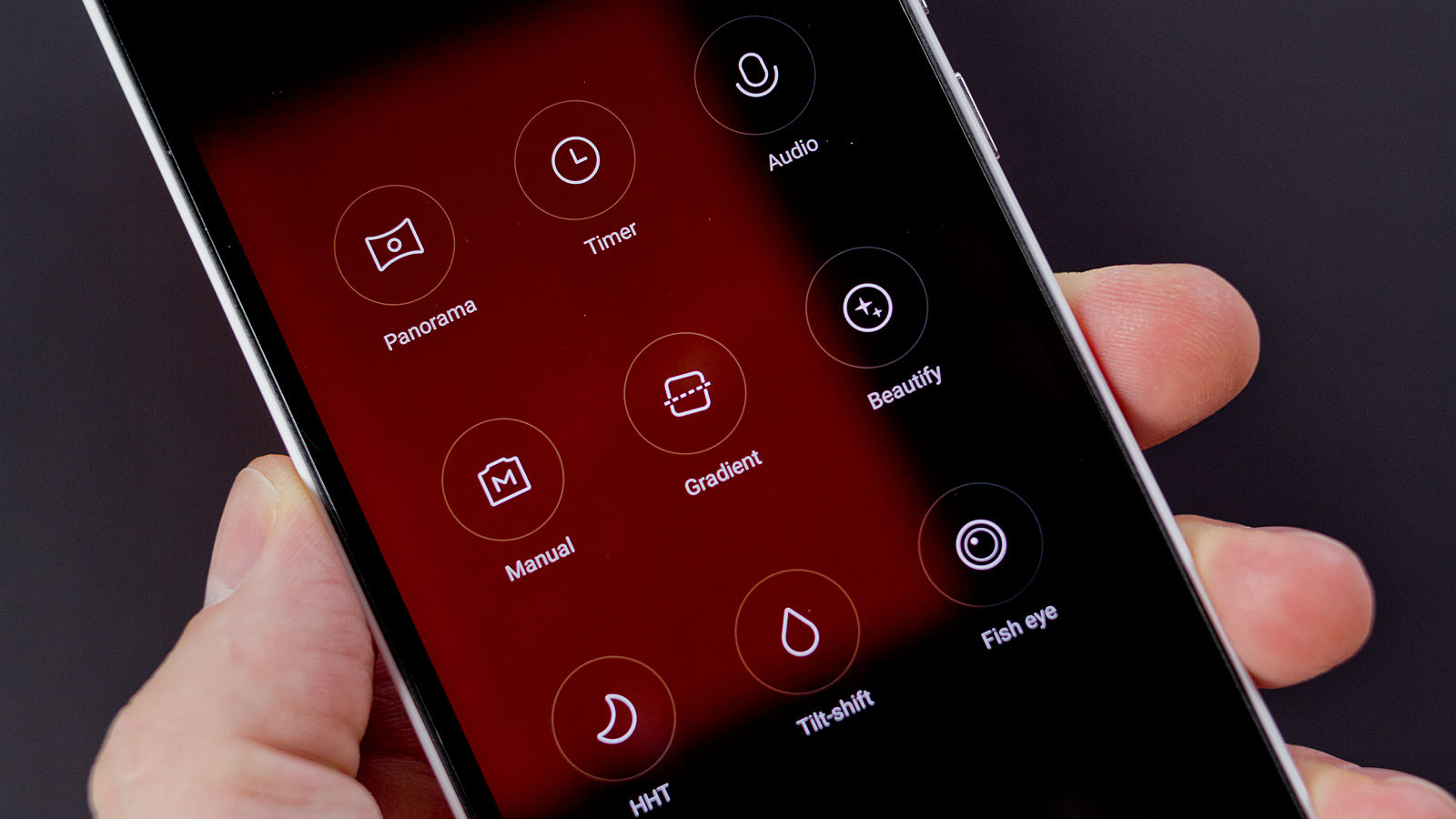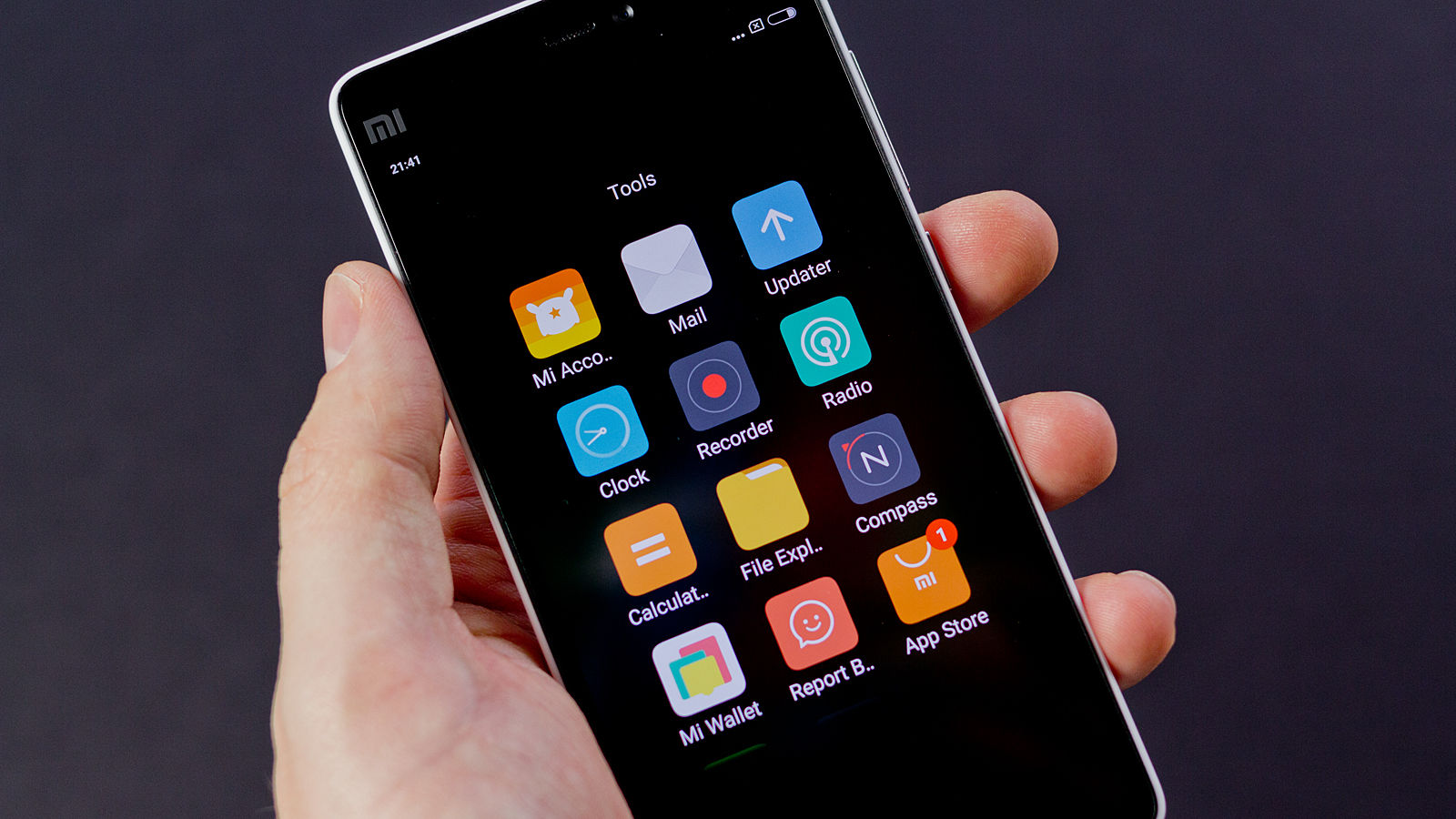Also see: Best Black Friday Phone Deals The Xiaomi Mi 4C looks on paper (and in the flesh) to be a fantastic device, half the price of the similarly specced Nexus 5X with performance that can be just as fast. But ‘can be’ is the key point here, as overheating issues plagued our review sample during our benchmarks. We’ll talk more about this in the Hardware & performance section of this review. We also had issues with some less-than-user-friendly preinstalled software, although these were easily rectified as we’ll discuss in the Software section. Also see: Best Android phones 2015/2016.
Xiaomi Mi 4C review: Price & UK availability
The Xiaomi Mi 4C is available in two versions: the standard model with 16GB of storage and 2GB of RAM, as reviewed here; and a 32GB of storage, 3GB of RAM ‘Advanced’ version that should offer improved performance. Xiaomi doesn’t officially sell its phones in the UK, so if you want to get hold of one you’ll need to buy it from a Chinese website that will ship to the UK. However, be warned that if you are shipping this phone to the UK from China you may also have to pay import duty – read our advice on buying grey-market tech. Our standard Xiaomi Mi 4C was supplied by Geekbuying, which charges £159.20 at the time of writing with free shipping to the UK. This version has a very closely matched spec to the 16GB Nexus 5X, which is available in the UK for £339 – more than double the price of the Xiaomi Mi 4C. Check out our review of the Nexus 5X. Geekbuying also sells the Mi 4C Advanced for £180.41 at the time of writing. If we were a paying customer we’d be inclined to opt for this version, given the small difference in price, the expected improved performance and the fact that there’s no possibility of expanding storage via microSD in either model. (There are other ways to add storage to Android, of course.)
Xiaomi Mi 4C review: Design & build
For a £150 phone made of plastic (albeit with a metal inner frame for enhanced rigidity and durability) the Xiaomi Mi 4C is actually really quite good-looking. A thin slab just 7.8mm thick, it has a soft-touch coating that feels great in the hand. There’s no creaking or flexing – this phone feels very well made. The screen-to-body ratio is high, with some pretty slim bezels. For a phone that has a 5in screen the Mi 4C is extremely well proportioned, just 138.1×69.9mm. It’s also lightweight, at 132g, without feeling like a toy. Also see: Best budget phones 2015/2016. If you’re thinking the Xiaomi Mi 4C looks familiar, that’s because it’s identical to the Mi 4i. In fact, it is pretty much the Mi 4i with a Qualcomm Snapdragon 808 chip inside and the addition of a futureproof USB-C port for data transfer and charging. Also see: Best MiFi 2016. Available in black, white, pink, blue or yellow the Xiaomi Mi 4C can be elegant or fun in its appearance. The rear cover is not removable, though, so be sure which model you want before you buy. Our review sample is white. You’ll find buttons and connectors in all the usual places, with a metal-effect volume rocker and power button high up on the right edge, a 3.5mm headphone jack and IR blaster at the top, a dual-SIM tray that pops out from the left edge and a USB-C port on the bottom. Turn over the phone and there’s a 13Mp camera with two-tone flash in the upper left corner, and a speaker grille that is slightly raised off the surface of a desk by a small plastic protrusion to help prevent the sound being muffled. The screen is a plus point, with a 5in full-HD (1920×1080 pixels) IPS panel with a sharp pixel density of 441ppi. Contrast is excellent, though the screen could be brighter – we found ourselves using it at maximum brightness at all times. That said, this is a ‘Sunlight display’ that is claimed to be much easier to view in all conditions. We weren’t blessed with any sunshine at the time of our review, but we certainly didn’t have any problems reading the screen outdoors. A slight quibble with the screen is that we’re not convinced it will fend off accidental scratching too well. It’s rather keen on fingerprints, too. Also see all Android phone reviews.
Xiaomi Mi 4C review: Hardware & performance
The Xiaomi Mi 4C has the same core hardware as the Nexus 5X, with a 1.8GHz hexa-core Qualcomm Snapdragon 808 64-bit chip, Adreno 418 graphics and 2GB of LPDDR3 RAM (3GB in the 32GB Advanced model). Both feature full-HD IPS screens, although the Nexus’ is slightly larger at 5.2in against the Xiaomi’s 5in. On paper, performance should be very closely matched. And it is – when the Xiaomi Mi 4C is cold. (You can compare the Xiaomi Mi 4C’s performance to other Android phones we’ve recently tested in our article What’s the fastest smartphone?) When we first tried to run our usual benchmarks they were plagued with pop-up adverts from various preinstalled apps. This isn’t a problem with the Xiaomi MIUI 7 operating system itself, rather the version of the software that was preinstalled before the phone was shipped to us. Having rectified this issue (we’ll explain how in the Software section) we were able to install our benchmarking apps and run them without interruption. AnTuTu had to be sideloaded, but it ran fine. On our second attempt we found very good performance that is right up there with the Nexus 5X. In Geekbench 3, for example, we measured 1251 points in the single-core component and 3233 in multi-core. By comparison, the Nexus 5X scored 1240 single-core and 3528 multi-core. But each time we ran Geekbench 3 the Mi 4C began to heat up and our results very quickly fell off a cliff – to the extent that we were unable to get higher than 650 points single-core and 2027 multi-core. See all smartphone reviews. We also ran AnTuTu on the Xiaomi Mi 4C from cold and recorded a very good 54,250 score. When the phone began getting warm this dropped to 44,818 points. We saw the same results in every benchmark we ran. In SunSpider (using Google Chrome) we recorded 496ms cold, which is incredibly good, but 1369ms warm (lower is better in this test). The Nexus 5X averaged 672ms. We also ran the intensive GFXBench graphics test. The 5X completed this test with results of 16fps in Manhattan and 38fps in T-Rex. Despite housing the same processor and graphics chip the Xiaomi Mi 4C could handle only 15fps in Manhattan and 34fps in T-Rex. As it became warm, this dropped to 11fps in Manhattan and 23fps in T-Rex. These aren’t small differences we’re talking about here. It’s important to point out that the Xiaomi Mi 4C feels fast and responsive in real-world use, but our benchmark results show how performance can rapidly deteriorate as you use the phone. It’s also worth pointing out that the Advanced Mi 4C should be faster with its extra gig of RAM, but we can’t promise that it won’t suffer the same overheating issues. The Advanced version does, however, offer an extra 16GB of storage, which will likely prove useful given that the preinstalled software takes up a huge chunk of that available (just over 10GB is available to the user) and the fact there’s no microSD slot. It’s not all doom and gloom when it comes to performance, though. Despite its dinky shell the Xiaomi Mi 4C is fitted with a generous 3080mAh battery that supports Quick Charge over USB-C (and is supplied with a compatible charger). It may not be removable, but you should get two days of use out of this Android phone (slightly less if you take advantage of the Xiaomi’s dual-SIM capability).
Xiaomi Mi 4C review: Connectivity & extras
The Xiaomi Mi 4C can accept two Micro-SIM cards. It’s a dual-standby model, although both SIM slots can support 4G. Unlike some other Chinese dual-SIM phones we’ve seen, you cannot use the second SIM slot to insert a microSD card. Also see: Best dual-SIM phones 2015/2016. When buying a phone from abroad you should always check the frequency bands it offers to ensure that it will be compatible for your home network. Those in the UK should note that this Xiaomi Mi 4C does not support the 800MHz LTE band, which means O2 customers (and customers of operators that use O2’s network, such as GiffGaff) will not be able to use 4G data. The 1800MHz and 2600MHz 4G LTE bands are both covered. Also see: How to check whether a phone is supported by your network. A standout feature here is the IR blaster, which we’re seeing in fewer flagships these days. The Mi 4C also supports 802.11ac Wi-Fi, Bluetooth 4.1, GPS and GLONASS, OTG and Miracast. NFC is not supported, and neither is there a fingerprint scanner, but there is a reversible USB-C data transfer and charging port, which we should see in more and more Android phones throughout 2016. Also see: Best Chinese phones 2015/2016.
Xiaomi Mi 4C review: Cameras
The Xiaomi Mi 4C is fitted with a 13Mp Sony IMX 258 camera with phase-detection autofocus and a two-tone flash at the rear, and a 5Mp front camera. You can switch between the two cameras with a swipe up or down on the screen. The selfie camera on the whole works very well. However, we noticed in our testing that it will try to work out how old you look in the shot. And it had some difficulty in deciding whether it was looking at a 25-year-old female or a 50-year-old male. One I would take as a compliment, and the other a little rude. Real-time filter previews are accessible with a swipe in from the right side of the screen. Swipe in from the left to access all the usual shooting modes including HDR, Panorama, Fish eye, Tilt-shift and Beautify (note that these aren’t available for the selfie camera). In Manual mode you can control the white balance, focus, exposure time and ISO. Video recording tops out at 1080p. Also see: Best phone camera 2015/2016. Our test shots from the Xiaomi Mi 4C were reasonably good, full of detail and with great colours. HDR improves things, and we’d recommend leaving it on all the time. You can see a couple of our test shots below. Here’s a 100 percent crop of the photo above: detail is a soft in places, but we couldn’t work out if it was post-processing causing the issue, or the lens. Edge Tap lets you tap the left side of the device (the top when held sideways) set the focus, and a second tap triggers the shutter. However, this is bad idea: you’re shaking the camera and there doesn’t appear to be any image stabilisation to compensate (not that we can fault the Mi 4c at this price). Here’s what happens when you tap – even lightly – to take a photo. Parts are in focus, while other parts are blurred. Look at the clock tower, too – it’s wonky. Macro shots show the camera is capable of some great-looking photos: The 100 percent crop below shows it can’t resolve fine detail like the Nexus 5X can: Colours are saturated making greens in particular look great: Again, zoom in 1:1 and detail is soft:
Xiaomi Mi 4C review: Software
The Xiaomi Mi 4C runs the MIUI 7 operating system, which is based on Android 5.1 Lollipop. Out of the box we had an awful first impression of MIUI 7. Before the phone was shipped to us an unofficial version of MIUI 7 had been preinstalled (with the version number 77.00.44.00). We expect this is because out of the box Xiaomi phones don’t run Google apps, including the Google Play store. (Xiaomi phones do have their own app store preinstalled, but language is a barrier here for UK users.) It’s worth pointing out that it isn’t only Geekbuying that preinstalls this version of the OS, and it’s very likely that if you’ve had a Xiaomi phone shipped from China it will be running this version of the OS. Unfortunately, it’s nothing like proper MIUI 7, and is plagued with third-party apps that pop up when you really don’t need them to and all manner of adverts, including on the lock screen. The good news is its really easy to install the official version of MIUI 7 and then sideload Google apps. Here’s a step-by-step guide:
- Browse to https://en.miui.com/download-293.html and download the latest stable ROM to your PC or Mac.
- Plug your Xiaomi Mi 4C into your computer using the USB-C cable. Open a file manager window to browse its contents and drop the downloaded file on to its internal storage.
- Now open the Settings menu on your phone and scroll down to About phone. At the bottom of the screen you’ll see a System updates option; tap this.
- Tap the three dots at the top right of the screen and select ‘Choose update package’. Browse to the downloaded file on your phone and follow the instructions to install it.
- When our phone rebooted some of the features that had previously been preinstalled were still present, so we performed a factory reset (Settings, Additional Settings, Backup & reset, Factory data reset, enable Erase stored content, Reset phone). This will wipe the Google apps from the phone, but it’s easy to get them back.
- Back on your PC or Mac download the Google Installer apk from https://en.miui.com/thread-3998-1-1.html
- As before, plug the Mi 4C into your computer, open a file browser and drop the downloaded file into the Downloads folder.
- On the phone you should now open the File Explorer app (which is in the Tools folder on the home screen). You should see the downloaded apk file at the top of your recent activity, or you can look within the Downloads folder. Tap on the download. It’s a third-party app so MIUI 7 will warn you about installing such things – wait for it to count down from 10 and you can then click ‘Allow once’.
- Once installed you’ll see a list of Google apps you can install, including the Play Store. You will likely find it will prompt you to download and install the Google Services Framework before you can install the Play Store, so accept this installation when prompted.
- Following our installation of the Play Store we found some apps within the store were reported as not being compatible with our device – AnTuTu was one of them. However, it’s very easy to search online for their apk file and then install it to the Mi 4C in exactly the same way you just installed the Google Installer apk. — Having set up our Xiaomi Mi 4C with MIUI 7 as it was intended (albeit with the addition of Google apps, given that you are intended to sign in with your Mi account rather than your Google account), our experience with the phone was infinitely better, and we did begin to see what the fuss is all about with Xiaomi phones. However, it has to be said there is an awful lot of preinstalled software on this device – with Xiaomi’s own apps for just about everything you can think of, including the aforementioned Chinese app store and its own virus scanner, just 10GB was available to the user. It is a nice UI, though, with plenty of customisations. In common with iOS there’s no app tray, which means everything is visible on the home screen. It’s easy to group apps into folders by dragging and dropping them on top of each other, though. A pinch on the home screen brings up options to move apps, add widgets and alter the wallpaper and effects (the transitions as you move between home screens). A selection of Themes are also available from the Settings menu. Pull down from the top of the screen and rather than your quick settings (these are available with a swipe from the right) you’ll find recent notifications. We like the idea of the Xiaomi Mi 4C’s Edge tap feature, which lets you go back a screen with a tap on the device’s left edge, or take a photo with a double-tap of the device’s left edge when the camera app is open. However, it seems an odd thing to want to do to knock the phone as you’re about to take a photo (most people would want to hold it steady), and the tap to go back feature seemed to be a little laggy at times. Another notable addition to MIUI 7 is a one-handed mode, which can shrink the phone’s display down to either 3.5- or 4in to make it easier to use in a single hand. This works on either the left or right side of the screen, suiting both lefties and righties, although we found it quite difficult to turn on (you must tap the home button and swipe to either the left or right depending on which side you want to use the screen). We also like the Child mode, which lets you allow access only to certain apps installed on your phone before handing it over to the kids. Read next: Best new phones coming in 2016 Follow Marie Brewis on Twitter. Marie is Editor in Chief of Tech Advisor and Macworld. A Journalism graduate from the London College of Printing, she’s worked in tech media for more than 17 years, managing our English language, French and Spanish consumer editorial teams and leading on content strategy through Foundry’s transition from print, to digital, to online - and beyond.


